A Smarter Short-Circuit Methodology
Introduction
Power converters are changing the way power systems operate and how they must be analyzed. While they are designed to support voltage recovery during faults, modeling them correctly in fault studies is still a major challenge. This post explains how our new approach captures converter behavior with high precision, offering fast and reliable results even in large power systems.
The Challenge in Modern Grids
Short-circuit calculations are essential for planning, protection, and operational studies. Historically, these calculations were developed around synchronous generators. These devices behave in predictable ways, injecting high fault currents without current limits. Converters behave differently. They are designed to operate within strict current limits and to follow control strategies that actively support the voltage at their connection point. These controls are nonlinear and mode dependent, meaning they can change depending on grid conditions and internal states.
Why Traditional Tools Fall Short
Traditional power system tools offer basic support for converters in short-circuit studies. However, their implementations are typically limited to simplified models where converters act as constant sources. These approaches ignore converter saturation and overlook the role of control algorithms during faults. As a result, these tools may incorrectly predict the level of support converters provide to the grid during fault conditions. This can lead to significant errors in current and voltage estimation.
Conversely, phasor (RMS) and especially electromagnetic transient (EMT) simulations are capable of representing converter behavior accurately. However, they are more computationally intensive than static calculations. For large systems or repeated scenarios, the time and resources required become a barrier.
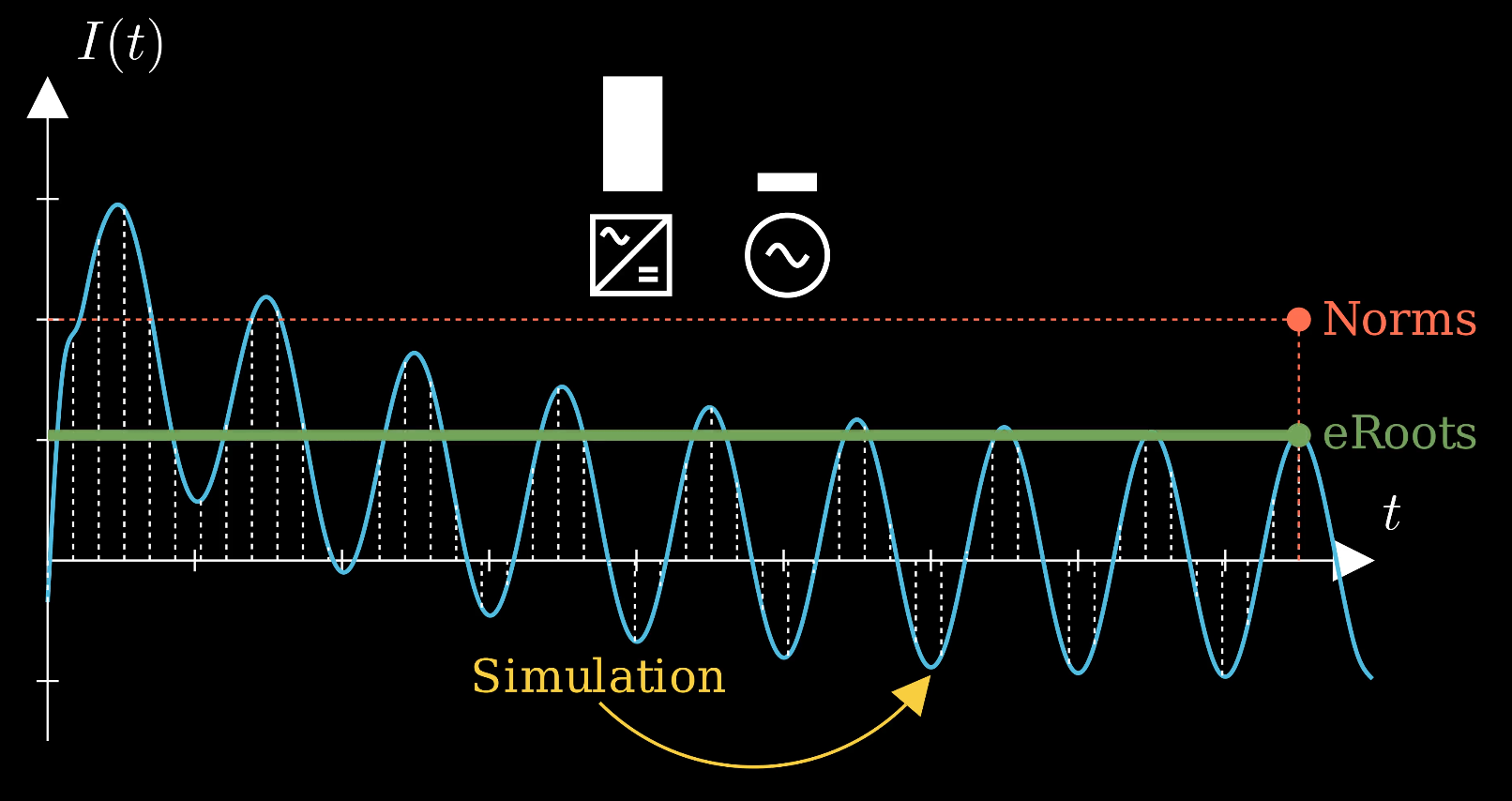
Our Approach: Fast and Realistic Short-Circuit Analysis
At eRoots, we have developed a new method that represents converter saturation and control behavior directly in steady-state fault calculations. The method is based on a generalized power flow formulation that includes additional variables and constraints to reflect converter dynamics. The algorithm classifies each converter into one of several operating states, such as unsaturated, partially saturated, fully saturated, or disconnected. For each combination of converter states, it solves the network equations and validates whether the result is physically meaningful. This allows the tool to find one or more equilibrium points that truly reflect what would happen during a fault. The process is fast and scalable, and the results have been validated against dynamic simulations with excellent accuracy.
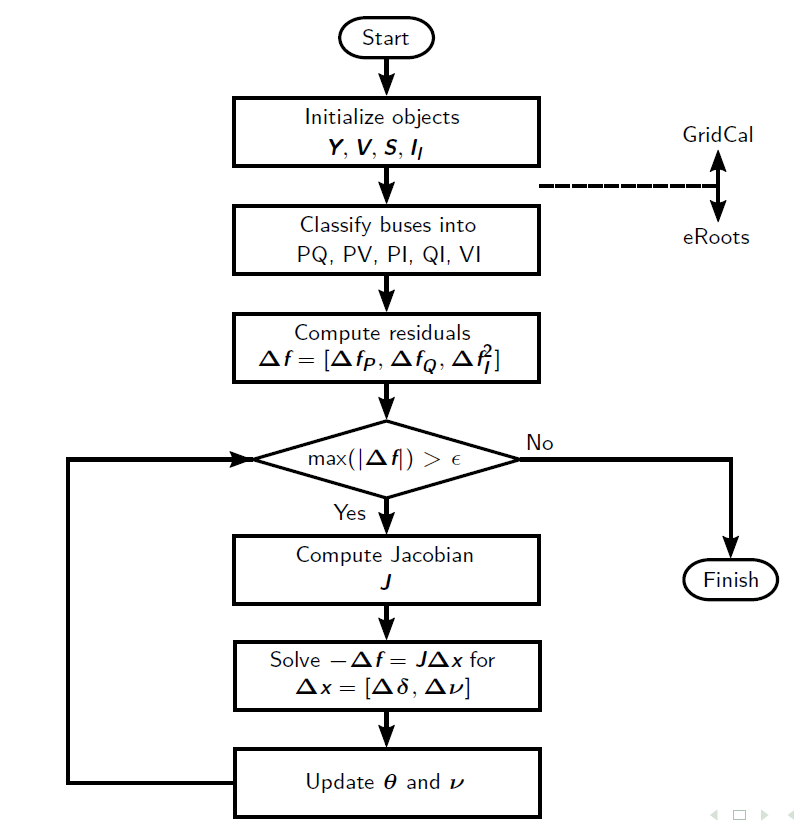

Our tool also allows engineers to explore different control strategies for converters. For example, a converter may prioritize supporting the positive sequence voltage, the negative sequence component, or a balanced combination of both. We tested strategies that apply a droop control on one sequence while allocating remaining current capability to the other, among others. This flexibility helps engineers evaluate how different control modes will affect grid performance during faults, especially in systems with multiple converters.
Validation 1: Texas Grid
To demonstrate the performance of the tool, we applied it to a modified version of the ACTIVSg2000 system, a 2000-bus synthetic grid based on the footprint of Texas, with added converters. The case involved simulating faults at different locations with various impedances, while capturing the response of each converter and the whole system solution. Our method was able to complete the full study in under 100 milliseconds, while the dynamic simulation took significantly longer.

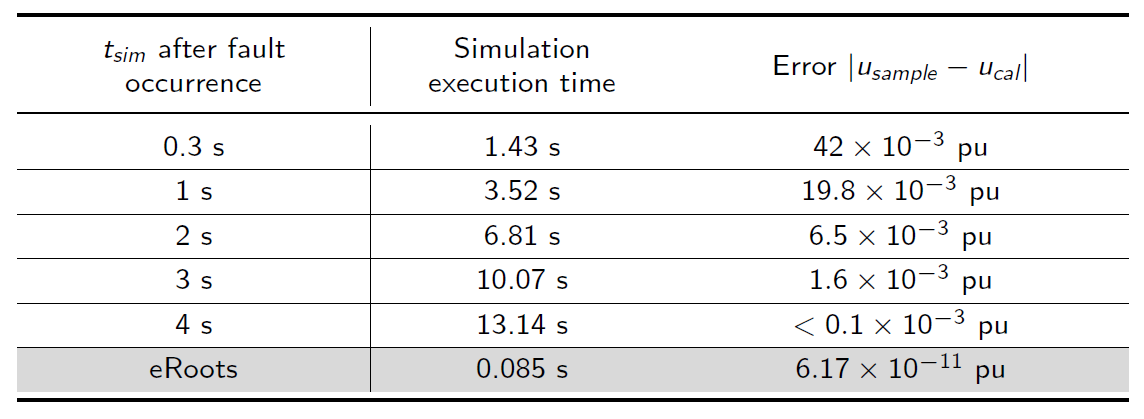
Validation 2: 75% Converter Penetration Case
Second, we validated our method against a real utility distribution benchmark with 75% converter penetration, based on a standard grid used in PowerFactory studies. This test included:
- Mixed grid-following and grid-forming converters
- Voltage droop controllers with current saturation
- High variability in fault impedance across multiple buses
Our steady-state tool matched the results from dynamic simulations within 0.002 pu, while completing the entire study 87 times faster. Additionally, it aligned significantly closer with the dynamic simulation results compared to the fault responses obtained using standard grid code-based methods. Relying on traditional methods while hoping to obtain the right short-circuit current is no longer feasible in modern grids.
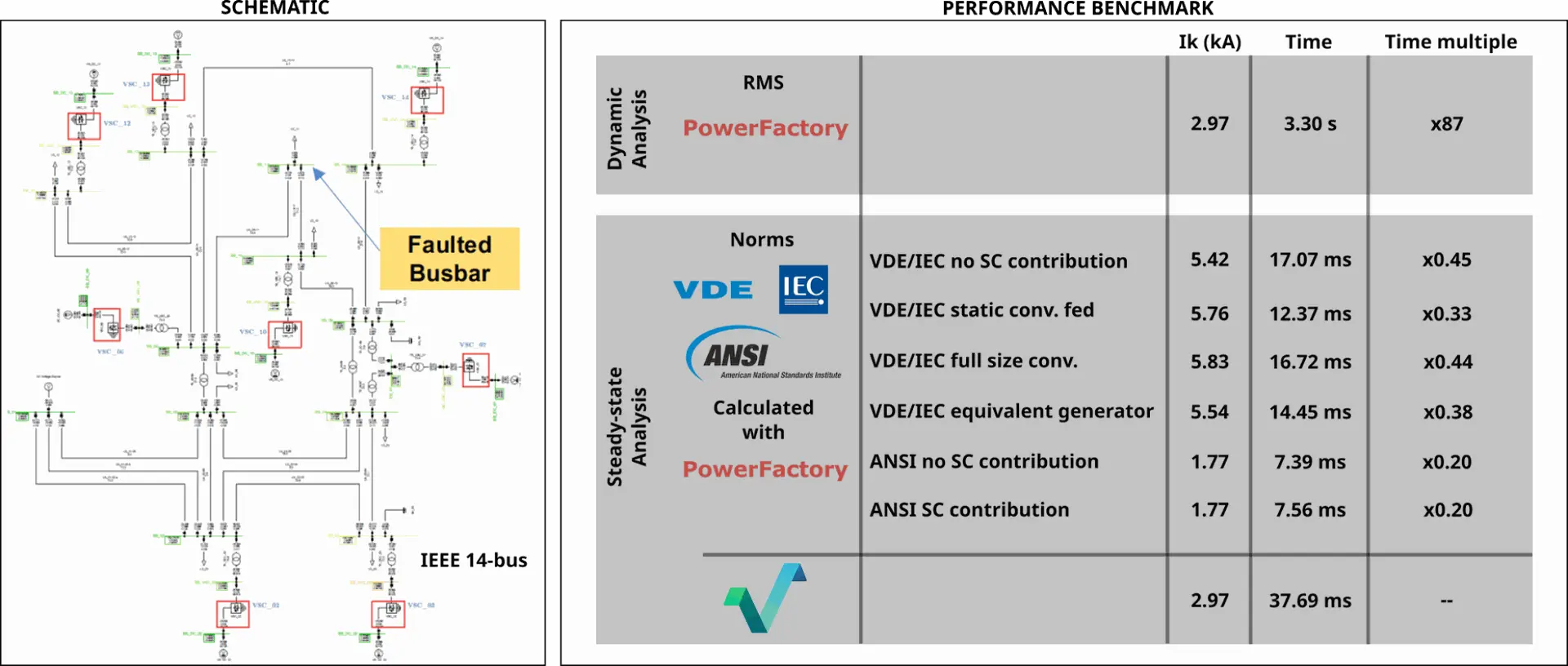
Practical Applications
Notably, our approach unlocks a range of new studies that were previously computationally infeasible, such as:
- Steady-state fault analysis in large networks
- Contingency studies under converter saturation
- Location-dependent fault impedance sweeps
- Optimal converter placement for voltage support
- Equivalent model building for real-time simulation
- Initialization of dynamic simulations
- Validation against EMT steady-state results
- Grid code compliance and support strategy design
Grid Equivalents for Realistic Modeling
In addition to fault studies, our methodology supports the construction of voltage-current (UI) equivalents. These equivalents provide a more realistic representation of grids with high converter penetration than classical Thévenin models. They are useful when a subsystem needs to be replaced by a simplified but accurate boundary condition, such as in TSO-DSO coordination or modular simulation studies.
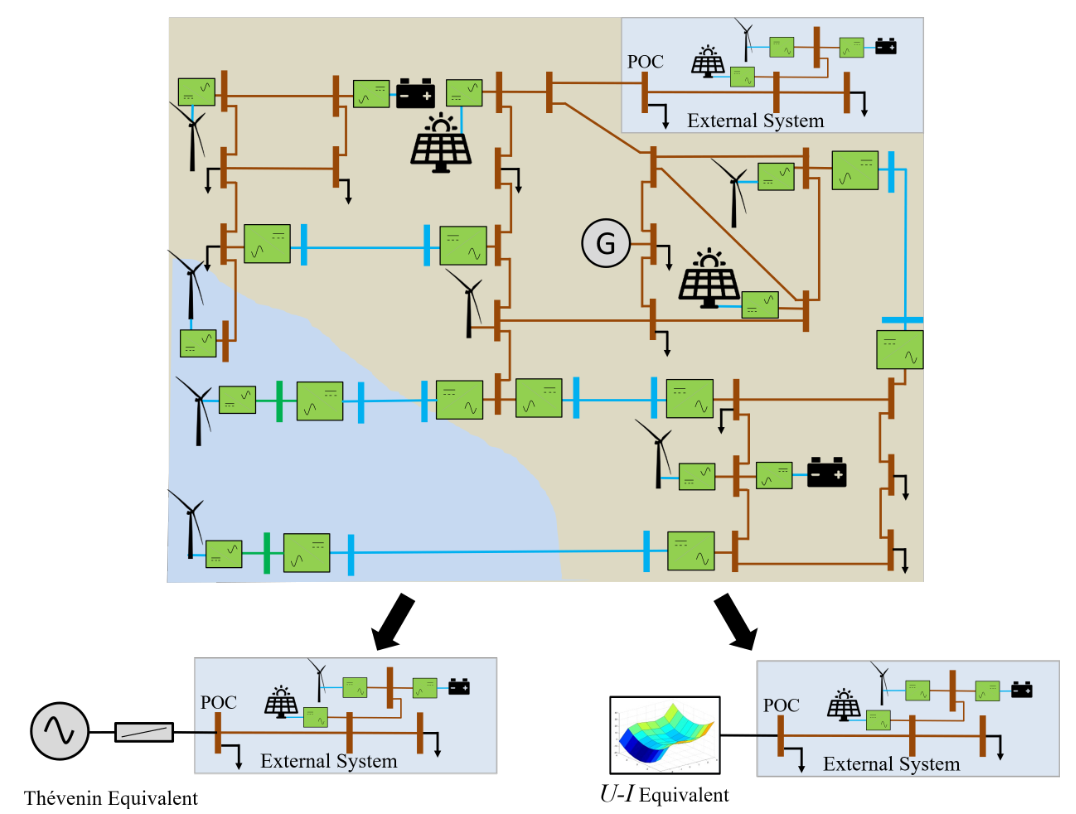
Finals Thoughts
Short-circuit analysis is entering a new era. With increasing penetration of converters, traditional assumptions no longer apply. Power electronics operate with control logic and limits that must be captured if we are to design safe, reliable, and efficient grids. At eRoots, we have built a fault analysis method that does just that. It is accurate, fast, and ready to be applied in consulting, product development, and planning environments. If you are facing the challenges of modeling converter-dominated networks, we would be happy to show you what this tool can do.
Want to explore the foundations of this work? See our peer-reviewed publications:
- A short-circuit calculation solver for power systems with power electronics converters
- Grid code analysis considering converter-based grid voltage support during faults
And reach out to us for demos, pilot studies, or licensing opportunities!